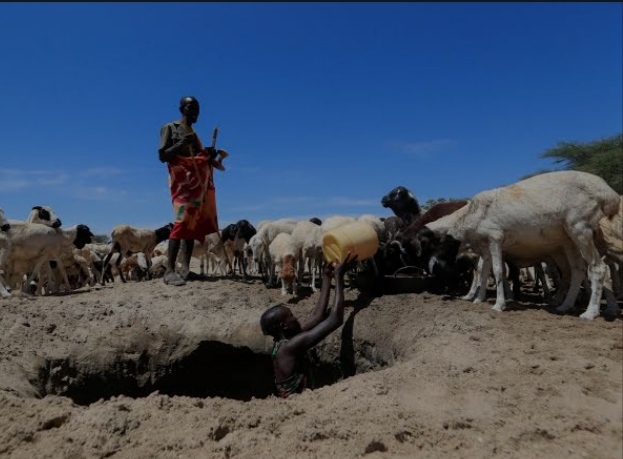Kenya’s Drought: 7 Practical Lessons From Countries.

According to the Kenyan authorities, over 4.35 million people living mostly in Arid and Semi-Arid Lands (ASAL) face severe food insecurity. Below average rainfall has protracted across four consecutive rain seasons, and the weather forecast indicates the October, November and December 2022 rains would also underperform in these already severely affected parts of the country
Below are some practical lessons for other countries to learn.
- Rainwater harvesting: Kenya could have built small water tanks to collect rainwater from rooftops and surfaces as India and Asia have done successfully.
- Drought resistant crops: Kenya can develop drought resistant crop varieties with subsidies for farmers, like Israel and Australia have done with crops such as barley, sorghum, and wheat.
- Water conservation: Kenya can build dams, fix leaky pipes, use low flow toilets and showerheads, and promote water efficient appliances and fixtures, as Spain and Australia have done.
- Desalination: Kenya can invest in desalination plants to provide water to areas suffering from drought by using its salty lakes to provide fresh water, like Saudi Arabia and Israel have done.
- Reusing wastewater: Kenya can invest in wastewater treatment plants to treat wastewater and use it for industrial agricultural purposes like Singapore has done.
- Cloud seeding: Kenya can invest in cloud seeding technology to increase rainfall in drought prone areas, like China, UAE, and the United States have done.
- Education and awareness: Kenya can implement education and awareness programs to promote water conservation and encourage people to adopt water saving practices, like Australia and Spain have done.
In conclusion, these are some of the practical ways other countries have used to tackle drought globally, and Kenya can adopt those measures to mitigate the effects of drought. The key is to implement a combination of these methods to reduce the impact of drought on the economy, environment, and human life in Kenya.
